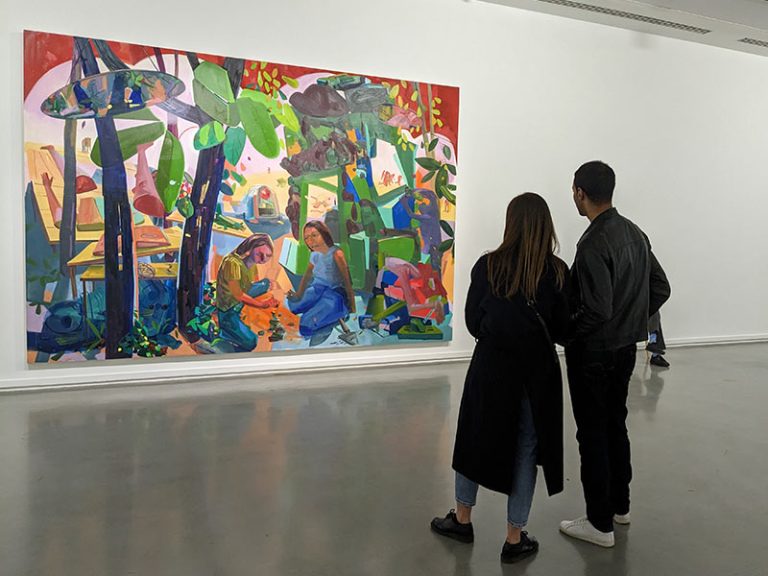Dinard (Ille-et-Vilaine). Irving Penn (1917-2009) was the first historical photographer to enter the Pinault Collection. Since the acquisition in 2007 of the portrait of a couple of ragged children from Cuzco (Peru), purchases have multiplied, making François Pinault one of Penn’s main collectors. The monograph presented in 2014 at the Palazzo Grassi, in Venice, displayed all the facets of the career of the legendary American photographer. Dinard now brings together an anthology of portraits of celebrities dating from its beginnings until the 2000s. Only one of the rooms in the villa Les Roches Brunes, reserved for the beginnings, subscribes to the chronology, with “Corner Portraits” past to posterity: Marlene Dietrich, Dalí, Georgia O’Keeffe, Duchamp or Hitchcock, others being less known, such as Maurice Chevalier or Louis Armstrong. Produced between 1946 and 1948, these portraits of personalities wedged between end-to-end partitions made Penn’s reputation and marked his break with the sophisticated stagings then in force. They even contrast with the portrait of Yves Tanguy in his studio, dating from 1944, which, although remarkable in the treatment of its volumes and its print in shades of gray, offers a classic and pictorial vision of the genre.
The famous “Vogue” order
When in 1946 Alexander Liberman, artistic director of vogue, asks Irving Penn to make a series of portraits of personalities, he wishes to enrich the cultural pages of the magazine and support his assistant in the emergence of his talent. New York, a city of refuge for European artists and intellectuals during the war, then experienced a bubbling cultural life. For this series of portraits, Liberman provided Penn with a studio where, for three years, those who made up the artistic, political, economic, financial and social world of the United States after the war would follow one another. This minimalist in shooting revolutionizes the codes of representation and thereby promotes attitudes, expressions and character traits that make those concerned react. Thus Georgia O’Keeffe will ask for the destruction of her portrait.
This already uncluttered decor will later be reduced to a simple gray backdrop or an old rug placed on the floor, above boxes or lighted tables so as to bring out their texture. Through this simple and effective procedure, the meeting of the photographer with his model can be played out, and vice versa. From one decade to another, to the portraits on foot are added during the years 1950-1960 bust portraits with close-ups on the face which, for some, draw a balance of power or a game between the protagonists . Picasso’s piercing eye or Barnett Newman’s eye behind his monocle, a cigarette in hand: it is the authority specific to each that can be read here. Bacon, Louise Bourgeois, Colette, Chagall, Cocteau, Richard Avedon, Cecil Beaton, Truman Capote…: a number of portraits are known in the 74 platinum or silver prints exhibited. Other, little-known images, such as the earthy ones of Joséphine Baker or Zizi Jeanmaire, express the radiant part of their personality. But the stern face of the British novelist Ivy Compton-Burnett (1884-1969) cannot be forgotten either.
Penn never stepped out of press orders, which offered him everything he wanted. If, from the 1980s, his portraits lose their character, remains the rare quality of the print on which Penn never compromised.







